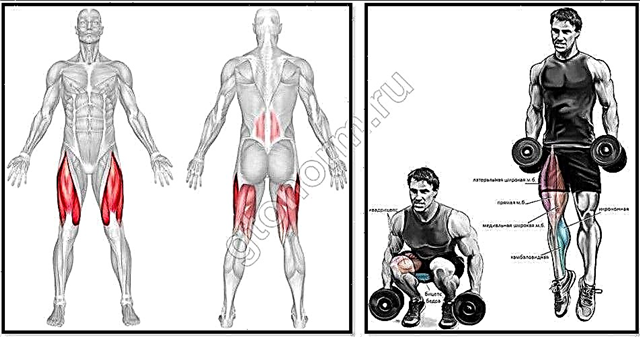The support functions and mobility of the ankle joint are provided by the distal epiphyses (endings) of the fibula and tibia. This joint accounts for shock loads when walking, running, jumping, as well as jerky lateral and twisting moments of force when balancing to keep the body in an upright position. Therefore, ankle fracture is one of the most common injuries of the musculoskeletal system, not only among athletes, but also among ordinary people who are not involved in sports (from 15 to 20% of the total).
The reasons
Traumatic ankle fractures occur from a strong blow or other excessive external impact on the ankle during sports, falls, traffic accidents. Rolling your foot on a slippery, uneven surface or wearing uncomfortable shoes will often cause this injury. Unsuccessful falls can be provoked by underdeveloped muscles and poor coordination of movements, especially with excess weight. Due to violations of the normal process of bone tissue repair, adolescents, pregnant women and the elderly are at risk.
Congenital or acquired degenerative changes, as well as various diseases, such as arthritis, osteopathy, osteoporosis, tuberculosis, and oncology, increase the likelihood of injury. Unbalanced nutrition, lack of calcium and other microelements reduce bone strength and elasticity of ligaments.
What is the danger
With timely and qualified treatment, even complex fractures, as a rule, heal without complications and the working capacity of the ankle is fully restored. In cases of severe displacement or fragmentation of bones, serious complications are possible and only partial rehabilitation of the functionality of the joint.
In the event of a late appeal to a medical institution or improper provision of first aid, serious consequences can occur, up to the onset of disability.
Open fractures and displaced fractures are especially dangerous, when bone fragments can damage the surrounding tissues and nerve endings, which threatens with loss of sensitivity and disruption of the foot muscles. Therefore, it is important at the first moment to ensure the immobilization of the limb, not to allow any load on the injured leg, and as quickly as possible to deliver the patient to the emergency room.
Sometimes a closed fracture worries only about joint swelling, minor pain, and the ability to walk remains. Despite this, and in such cases, it is necessary to consult a doctor to establish an accurate diagnosis and correct treatment.
Fracture of the outer ankle
This is the destruction of the lower end of the fibula. ICD-10 code (international classification of diseases) - S82.6. Such an injury is characterized by mild symptoms - swelling of the ankle joint, sharp pain at the moment of injury and tolerable pain even when leaning on the leg, since the main load falls on the tibia. This often provokes a delay in contacting a traumatologist, which can cause improper bone fusion and destruction of ligaments, muscles and nerve fibers. As a result, an easily treatable fracture of the external ankle can turn into a serious pathology.
Internal ankle fracture
This is the destruction of the lower end of the fibula (according to ICD-10 - S82.5.). In such cases, oblique or straight (pronation) fractures of the medial malleolus occur, which are often complicated by sprains, and may be accompanied by acute pain, loss of support function of the leg, severe swelling and bruising in the joint area.
Displaced fracture
These are the most dangerous and complex cases of ankle injury, which have pronounced symptoms: sharp intolerable pain, severe swelling, extensive local hemorrhage and a characteristic crunch when the muscles of the lower leg are strained or the foot is moved. Sometimes a piece of bone destroys the surrounding tissue and comes out, provoking bleeding and the danger of infection in the wound. This often occurs with an apical fracture (fracture of the tibia or fibula near the distal pineal gland). In the most severe cases, both ankles are injured with dislocation and rupture of the ligaments.
Fracture without displacement
Such injuries are characterized by the destruction of the distal part of the leg without acute pain syndrome and severe edema. There is only slight discomfort when bending the foot and walking.
An ankle fracture without displacement can be confused with a sprain, so it is better to check the diagnosis with a medical specialist.
Diagnostics
The exact location and extent of damage is established using an X-ray examination. Several pictures are always taken in different planes (from two or more, depending on the complexity of the injury). To assess the condition of soft tissues and ligaments, as well as to exclude the presence of internal hematomas, magnetic resonance imaging or computed tomography is prescribed.

© richard_pinder - stock.adobe.com
Treatment features
The main way to restore the integrity of the bone is the complete immobilization of the ankle joint. Depending on the type of injury, the correct position of the fragments is ensured by closed or open reduction. After surgery, the necessary procedures are carried out to heal the wound.
Conservative treatment
Such methods are used in cases of closed fractures without displacement or if it can be eliminated by closed reduction, and the ligamentous apparatus has minor damage. In addition to immobilization, medications are used to relieve pain, edema and eliminate inflammatory processes.
The unsatisfactory state of the patient's health can be the reason for refusing surgery and using conservative treatment.
Using an immobilizing dressing
In case of a simple fracture without displacement and rupture of the ligaments, after the diagnosis and elimination of the edema, an immobilizing U-shaped or longitudinal circular bandage is applied made of plaster, synthetic bandage or low-temperature plastic. Covering part of the foot and the lower part of the lower leg, it should provide a clear fixation of the joint and not interfere with normal blood circulation in the limb. In the case of such immobilization, after closed reduction, a control X-ray is imperative to make sure that the position of the fragments is correct.
In addition to bandages, various types of plastic and combined bandages and orthoses are used. Such devices are easily adjusted to the size of the limb. With the permission of your doctor, you can take them off and put them on yourself.
Depending on the complexity of the fracture, any load on the immobilized limb is excluded for a certain period of time. The timing of wearing a fixation device or bandage also depends on this (from 4-6 weeks to two months or more).

© stephm2506 - stock.adobe.com
Closed manual reduction
This procedure is performed under local anesthesia. The surgeon feels the docking and alignment of the displaced bones and ensures their correct anatomical position in the joint and lower leg.
The time and quality of restoration of the limb performance largely depends on the timeliness and accuracy of its implementation.
Operative treatment
A surgical operation is necessary:
- With an open fracture.
- When the injury is complicated by a complete rupture of the ligaments or there are many fragments.
- With a two- or three-malleolar fracture.
In these cases, under general anesthesia, the joint is opened and bones and fragments are openly repositioned, as well as their fixation using special medical nails, screws and pins (osteosynthesis). At the same time, damaged tendons, ligaments and nerve endings are restored. Then a plaster cast is applied, which does not cover the site of surgery and allows for the treatment and control of the wound healing process.
Possible complications
With a late visit to the doctor, self-treatment or violation of the rules and terms of wearing the fixation device, bones and their fragments can grow together in an unnatural position, which will interfere with the normal functioning of the joint and provoke dislocations and the development of flat feet.
An improperly formed callus can pinch nerve fibers and obstruct or block the innervation of the adductor muscles of the foot and the sensitivity of the skin. Untimely treatment of a postoperative wound can cause the development of an inflammatory process or an infectious disease of muscle tissues, bones and blood vessels.
How much to walk in a cast with an ankle fracture
In any case, a plaster cast or other fixation device is removed only after a control X-ray, which confirms the complete and correct fusion of bones and fragments, as well as the normal condition of the ligaments and tendons.
Wearing time
First of all, the timing of wearing the fixing device depends on:
- Timeliness and correctness of first aid.
- The type and complexity of the fracture.
- Individual characteristics of the patient's body.
A balanced diet and adherence to the recommendations of the attending physician contribute to acceleration of recovery.
Offset
In this case, the determining factor is the correct preliminary fixation of the joint during first aid and the quick delivery of the victim to the emergency room. Otherwise, the displacement may become difficult to correct with closed reduction and surgical intervention is required.
No offset
In most cases of such fractures, immobilization lasts from one to two months. The time of full recovery depends on the intensity of the rehabilitation measures and the individual characteristics of the patient.
If the outer part is damaged
Such fractures are treated with surgery, so it will take two months or more to wear a fixation bandage. As after any surgical operation, in this case, the recovery period is also determined by the rate of healing of the postoperative wound.
With a fracture of the lateral malleolus without displacement
This is the easiest case of ankle failure, and joint fixation is required for a period of one to one and a half months. After a week, a gradual normalized load on the leg is allowed.
Fusion stages
At the time of the fracture, local hemorrhage occurs, and the first five, seven days there is an inflammatory process with the formation of a soft seal from fibrous tissue (resorption). Then begins the creation of collagen connecting threads (reversion) from special cells - osteoclasts and osteoblasts. After that, as a result of cell mineralization, a callus is formed between the fragments within a month. In the next three to four weeks, the formed structure ossifies due to its saturation with calcium.
Complete restoration of the damaged bone and its surroundings, which ensures the full functioning of the ankle joint, is possible after 4-6 months of rehabilitation.
Duration of rehabilitation
The rehabilitation period can last from four to six months or more. It depends on the complexity of the fracture, the methods of treatment used and the characteristics of the individual person - age, health, lifestyle and presence of bad habits. The acceleration of recovery processes is facilitated by:
- Early start of the dosed load on the injured leg and performing the exercises of medical gymnastics.
- Local massages and various physiotherapy treatments.
- Balanced nutrition, which ensures the saturation of the body with the necessary substances and minerals (primarily calcium).
- An active life position - the implementation of all prescribed procedures, regular exercise therapy (exercise therapy) and the development of joint mobility, despite the permissible pain and weakness of atrophied muscles.
The first exercise therapy exercises for ankle fracture should be started immediately after the pain syndrome has been relieved on the recommendation or under the supervision of a medical specialist.









